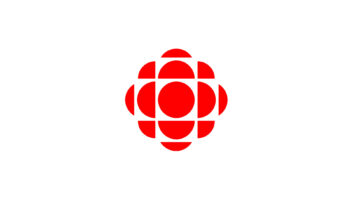One in a series of articles from the Radio World ebook “Spectacular Radio Studios.”
The new Maison de Radio-Canada in Montréal is the headquarters for the French-language network of Canada’s national public broadcaster, CBC/Radio-Canada.
It houses production facilities for the public broadcaster’s television, radio and digital content. CBC/Radio-Canada offers diverse content in English, French and eight Indigenous languages; it also delivers content in Spanish, Arabic, Chinese, Punjabi and Tagalog through Radio Canada International (RCI).
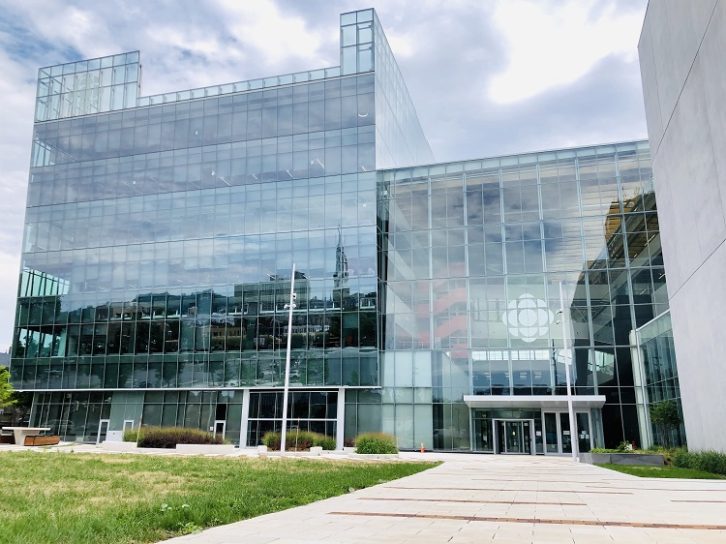
“CBC/Radio-Canada’s previous building, built in the 1970s, no longer met our needs as a 21st-century public broadcaster,” said Supervising Audio Engineer François Goupil.
“Neither the workspaces nor the production infrastructure fit for our current workflow. Moving to a brand-new facility right across the street, the new Maison de Radio-Canada, gave us the chance to fully embrace the AoIP world. We had the chance to start from a clean slate.”
Building construction began in 2017 and the first radio studios were delivered in August 2020. The radio studios are now fully operational. Colleagues on the TV side subsequently moved production from the old building to the new one, starting with CBC/Radio-Canada’s French-language all-news network, ICI RDI.
For radio alone, the facility has 13 new radio studios, 15 audio booths, a new master control and all of the supporting facilities, using SMPTE 2110-30 audio networking.
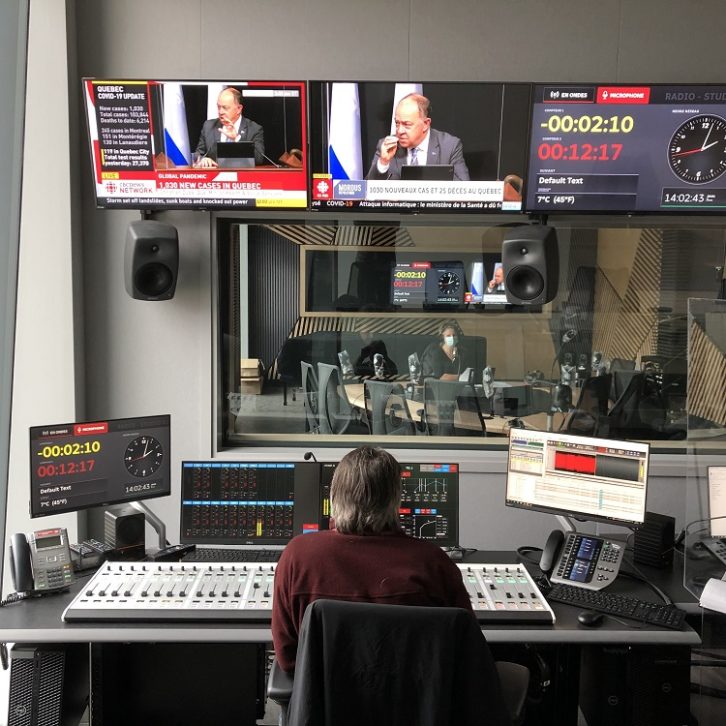
(Photos courtesy CBC/Radio-Canada)
“CBC/Radio-Canada is one of the first broadcasters in the world to rely on IP technology end to end — i.e. from production to distribution, across all of its platforms,” Goupil said. “This technology is allowing us to reduce our environmental footprint, since the equipment takes up less space and uses less energy.
“Apart mostly from the microphones and loudspeakers, at completion, all audio signals will be carried using the 2110-30 standard, from our studios up to our satellite uplink.”
He said integration of AoIP devices from multiple vendors has been a challenge, since they have slightly different implementations of the standard.
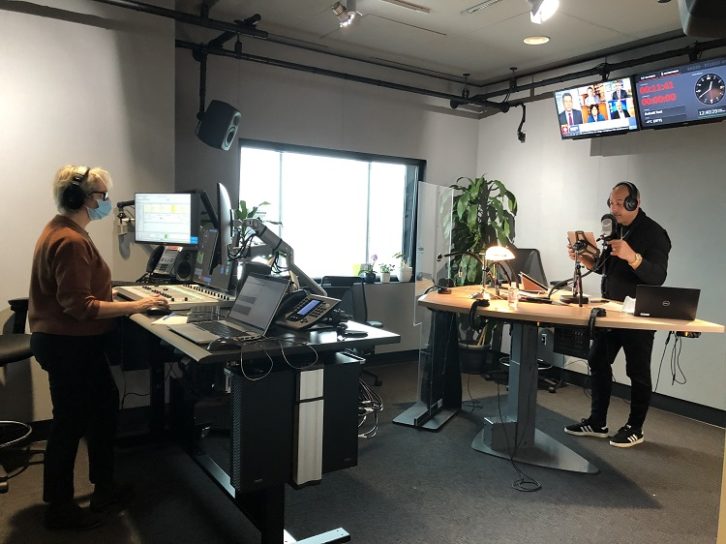
[Check Out More of Radio World’s Facility Showcases]
“We sometimes had to discuss with their development teams in order to improve their device’s compliance. However, this is a win-win situation, since this collaboration enabled us to better integrate their devices on our network and they gained a better compatibility towards the 2110 and NMOS (for control) standards. This project is a big push towards standards that will allow AoIP equipment from different manufacturers to better integrate together,” Goupil said.
“AES-67 is a lowest common denominator that allows signal interchange but it is not complete enough for full integration. Preexisting formats such as Dante and Livewire work great in a pro audio environment that doesn’t require automated control, but they are closed standards that don’t allow us to talk directly to the equipment. Thus our choice of SMPTE 2110 for audio and NMOS for control,” he continued.
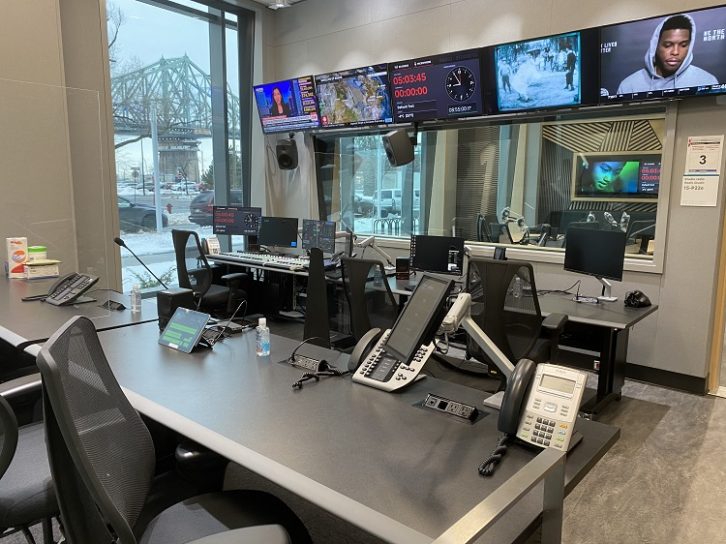
“Broadcast equipment now offers good compatibility but there is still work to be done with AoIP professional equipment — wireless microphones for example — that are challenging to integrate in a broadcast environment where we need full control and open standards.”
This project was led by François Legrand, CBC/Radio-Canada’s senior director for capital projects. A team consisting of Jocelyn Jobin, Dai Dam and Nicolas Ouellet from engineering, Michael Néron from production, François Goupil as audio engineer and David-Alexandre Proulx-Leboeuf from maintenance took care of the radio studios.
Goupil’s role was to create a link between the studio users and engineering so that the facilities would meet or exceed users’ needs. “I was therefore in charge of building the Lawo Power Core configurations, creating the VisTool GUI, consulting with users about the studio layouts and making sure that all the peripherals integrated well with the new equipment.
“Being a large-scale project, there were a lot of other people involved, since the whole facility was built from scratch.”
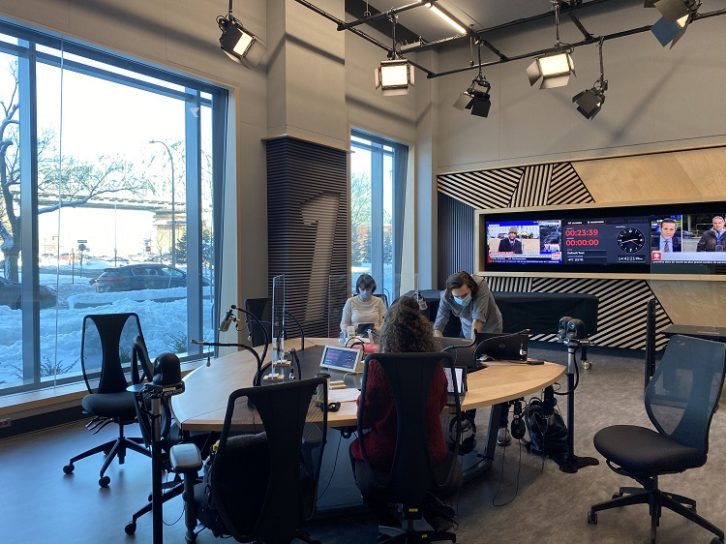
The firm of Broccolini was in charge of construction. The building was designed by Béïque Legault Thuot Architectes (BLTA) and Quadrangle Architects, with Dupras Ledoux responsible for electrical and mechanical engineering.
“In terms of studio integration, all the work was done in-house, with the exception of wiring, which was handled by external contractors — L. Cadecom, Telecon and many others,” Goupil said.
[Sign Up for Radio World’s SmartBrief Newsletter]
The radio studios were designed around Lawo’s Ruby audio console, running on the Power Core platform. The studios all have physical controllers with 16 to 24 faders, while smaller booths have touch monitors running Lawo’s VisTool, presenting the user with virtual faders.
“The new consoles being much smaller than the ones we previously had, we were able to mount all of the critical systems under the operator’s table and all of the other devices, such as Telos VX Enterprise phone servers and Comrex codecs, in a server room away from the studios.”
Microphones are mainly Neumann BCM 705 while speakers are from Genelec. The playout system is Dalet, and studio information displays are from IDS Digital. The cabinetry in control rooms is by Sustema Consoles, while local shops provided custom furniture for the studios. The Media IP network is built around Arista switches.









